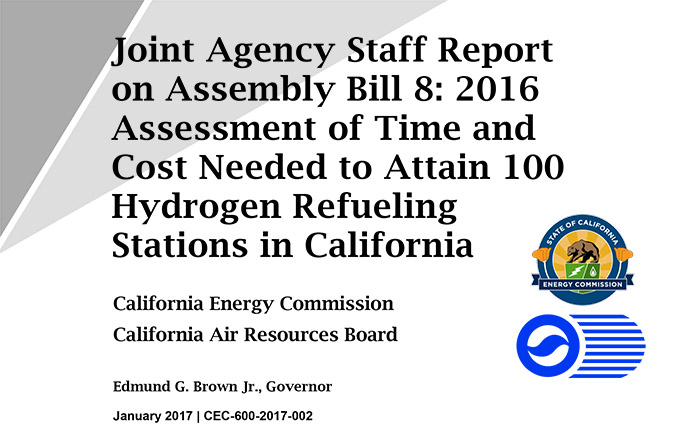The California Fuel Cell Partnership is pleased to welcome California’s 29th retail hydrogen station in San Ramon.
Built by The Linde Group, this new station is their third retail hydrogen station in California. Linde developed California’s first retail station in West Sacramento and also operates one in San Juan Capistrano.

Today, the Golden State welcomes its 28th retail hydrogen station in the City of Lawndale. Like most of California’s retail hydrogen stations, the Lawndale station is open 24 hours.
California is working toward a milestone of 100 retail hydrogen stations statewide to support the roll-out of fuel cell electric passenger vehicles. CaFCP and its members are also working on stations for fuel cell buses, and medium-and-heavy duty trucks. We’re also drafting a vision of the next phase of the passenger vehicle commercial launch in California and across the U.S.

The Energy Commission released a Notice of Proposed Awards for 16 additional hydrogen stations to continue expanding the hydrogen station network in California. Added to the retail hydrogen stations already open and under construction, California will have more than 60 stations statewide by 2020 (or sooner.)

The California Energy Commission and California Air Resources Board released the annual Joint Agency Staff Report on Assembly Bill 8: 2016 Assessment of Time and Cost Needed to Attain 100 Hydrogen Refueling Stations in California. Highlights from the report are:
On December 2, the California Air Resources Board held a public input workshop to discuss The Zero-Emission Vehicle (ZEV) Investment Commitment. Bill Elrick attended the meeting and presented a statement that the highest priority for hydrogen and FCEVs is to increase the number of stations in the state at a faster pace. In addition to CaFCP’s comments, other stakeholders highlighted the need for hydrogen investment. ARB is accepting comments electronically until December 16th.
The members of the California Fuel Cell Partnership prepared the Medium-Duty and Heavy-Duty Fuel Cell Vehicle Action Plan for California to accelerate the development and commercialization of medium-and heavy-duty FCEVs in California. Federal air quality targets, AB 32 GHG reduction targets, and State’s transport electrification targets, combined with the goals of the California Sustainable Freight Action Plan, make California a favorable place to launch zero-emission medium- and heavy-duty transportation technologies.